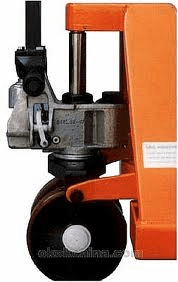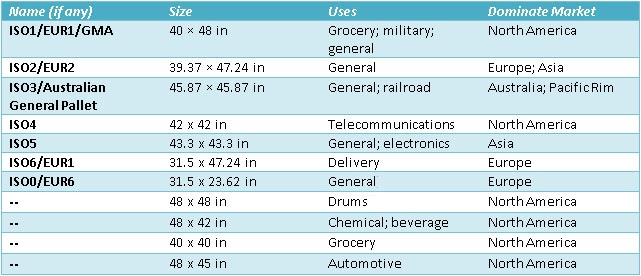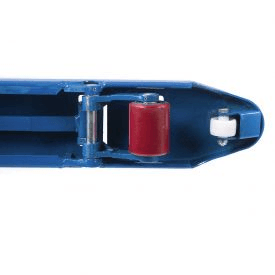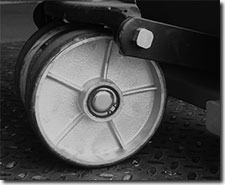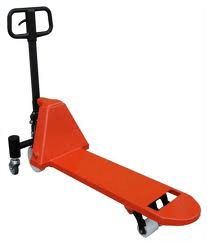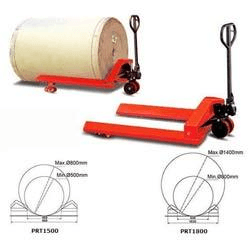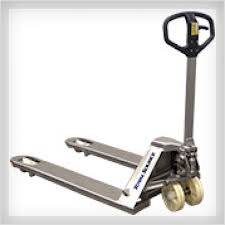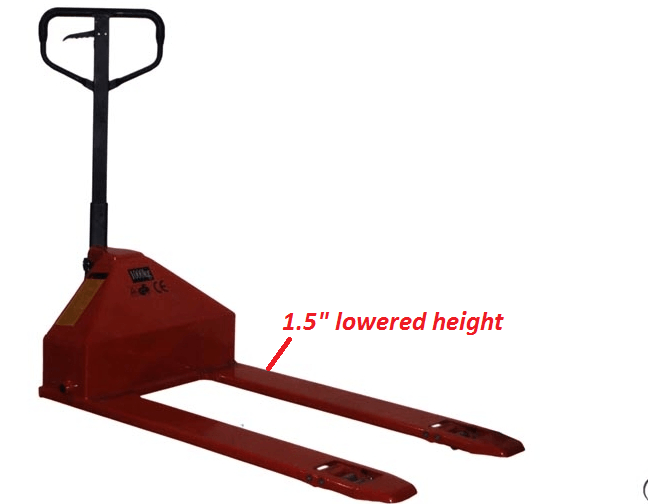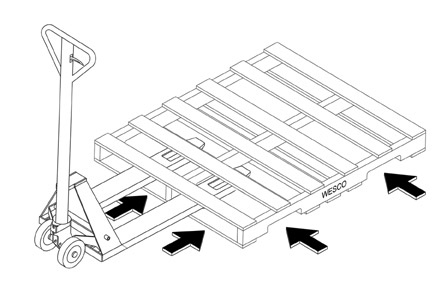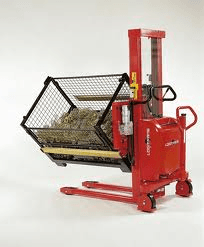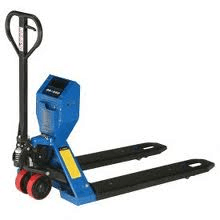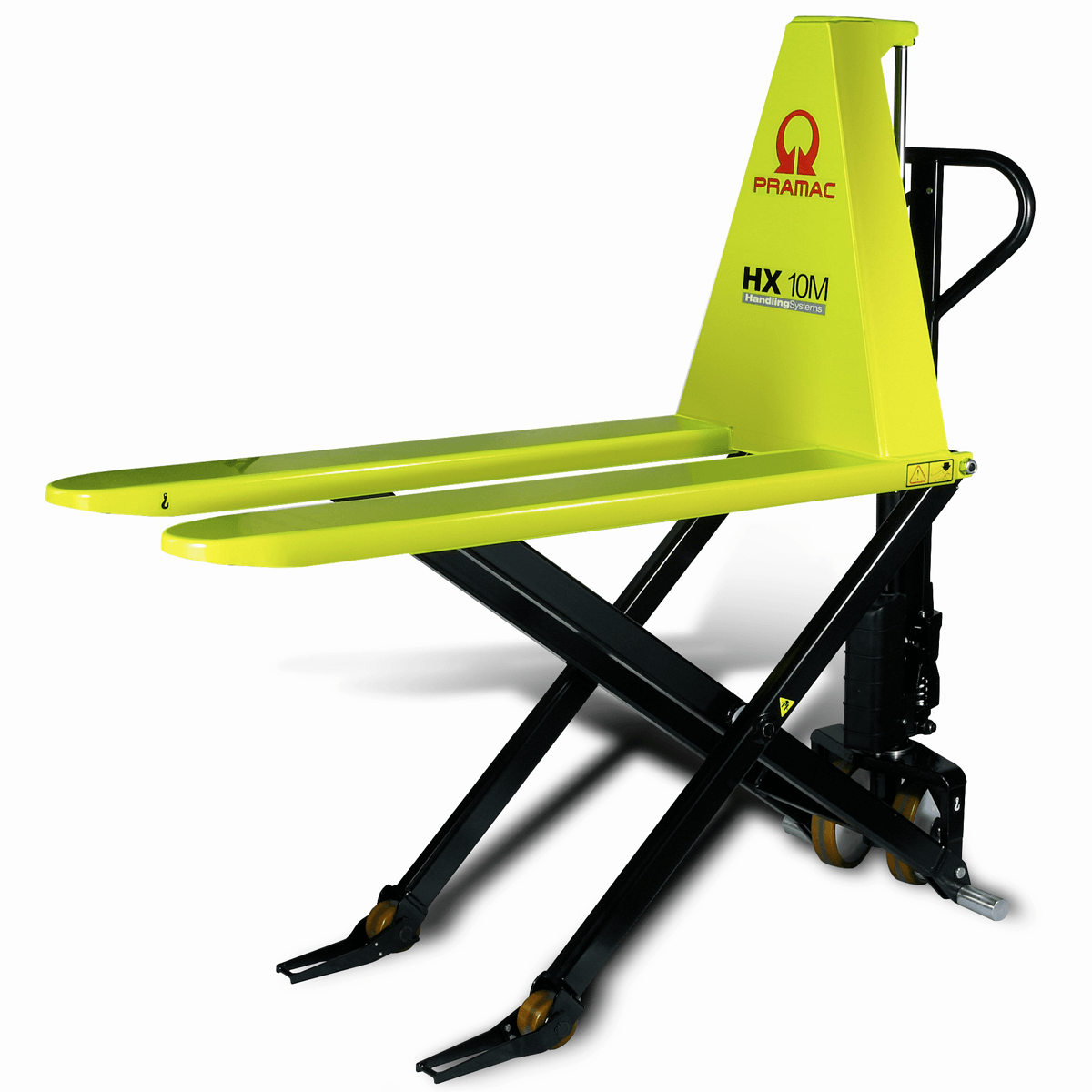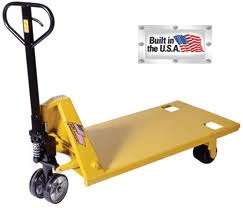Truck Driver Info

|
We employ three types of professional drivers: solo, team and driver technicians. Our solo and team drivers safely and efficiently deliver liquid bulk gases to Air Products plants and customers throughout the world. This includes being responsible for the preparation and completion of Air Products paperwork and adhering to our safety policies and procedures. Driver technicians (Express Service Drivers) travel to our customer sites across a wide geography with nitrogen services equipment to purge lines and perform various duties.
|

 Truck drivers are a lot like deliveries...You need to be handled with care. Truck drivers are a lot like deliveries...You need to be handled with care.
A Growing Demand For Truck Driving
|

|
 Pallet Jack Features
Pallet Jack Features
Uncommon designs and attributes are integrated to improve a pallet jack's faculties in certain applications.
|
These designs have a single fork of abnormal width. They are recommended for moving irregular, cumbersome objects such as safes, ATMs, and vending machines. |
Image credit: LiftMate
|
|
These jacks are retained for the hauling of large rolls, reels, and large sections of pipe. The aslant forks are capable of cradling round objects so they do not roll or shift during transport. |
Image credit: Astha Enterprises
|
|
Pallet jacks that are stainless steel or galvanized have an enriched structure to maintain functionality in corrosive environments. These jacks may have grease fittings and a specialized hydraulic pump. |
Image credit: Forklift America
|
|
These pallet jacks are designed to transport low clearance pallets. The forks have very low resting heights. |
Image credit: Vestil Mfg.
|
|
With long and low profile forks, the jack is designed to pick up a four-way pallet from any direction. |
Image credit: Wesco Manufacturing
|
|
After accepting a burden, the forks can lift and rotate the load 90°. The tilt may be toward the operator or the sides. This is an ergonomic solution to prevent worker fatigue/injury when distributing cargo off the pallet. |
Image credit: Carry Lift Group
|
|
An integrated analog or digital scale calculates the weight of the pallet jack's load. The scale will have a user interface for calibration and display. |
Image credit: Global Industrial
|
|
A scissor lift mechanism is used to provide a higher stroke than what is supplied by a common hydraulic piston. This is used to provide ergonomic access to a pallet's content. |
Image credit: Bernards Bins
|
|
A pallet jack that utilizes a high-gauge, solid steel deck rather than forks to lift and haul its burden. |
Image credit: Pallet Mule
|
 European directories
|
|||||||||||||||
 Country-specific information Country-specific information   
|
||||||||||||||||||||||||||||||||||||||||||||||||||||||||||||||||||||||||||||||||||||||||||||||||||||||||||||||||||||||||||||||||
|
|
|||

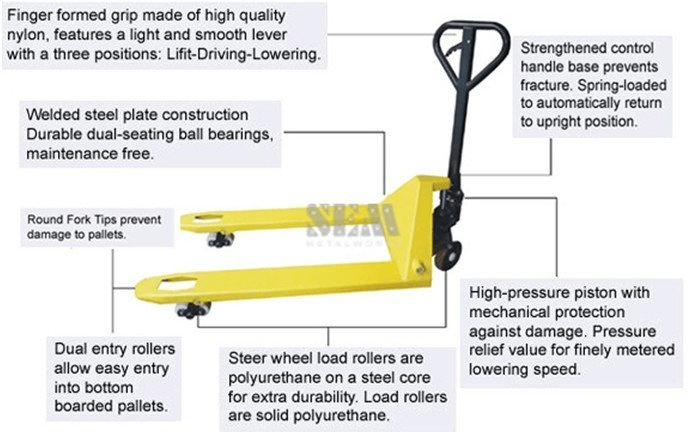
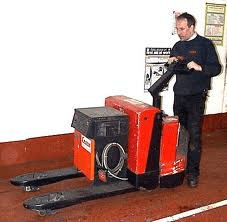 Pallet trucks almost always have fork widths of 7" or 9", but the measurement between the furthest edges of the forks can range between 20--47". The load-bearing span is known as the carriage. Models with a width above this range are used in specialty applications and some models come with an adjustable carriage width. The length of the forks is imperative to a pallet jack's ability to safety transport loads. Lengths often range from 32" to 90" depending upon the intended application.
Pallet trucks almost always have fork widths of 7" or 9", but the measurement between the furthest edges of the forks can range between 20--47". The load-bearing span is known as the carriage. Models with a width above this range are used in specialty applications and some models come with an adjustable carriage width. The length of the forks is imperative to a pallet jack's ability to safety transport loads. Lengths often range from 32" to 90" depending upon the intended application.